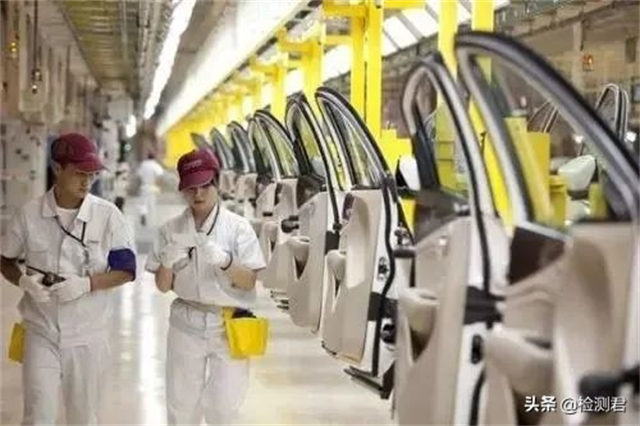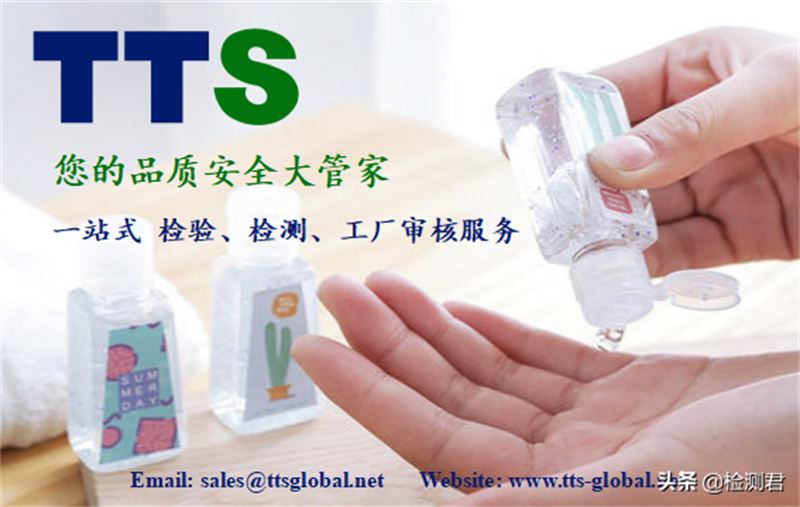Whether you are SQE or purchasing, whether you are a boss or an engineer, in the supply chain management activities of the enterprise, you will go to the factory for inspection or receive inspection from others.
So what is the purpose of the factory inspection? The process of factory inspection and how to achieve the purpose of factory inspection? What are the common traps that will mislead us in the judgment of the factory inspection results, so as to introduce manufacturers that do not meet the company’s business philosophy and management requirements into the company’s supply chain system?
How to do a professional factory audit
1. What is the purpose of the factory inspection?
One of the buyers (customers) hopes to have a better understanding of potential suppliers through the factory inspection, obtain specific information on business capabilities, production scale, quality management, technical level, labor relations and social responsibility, etc., and compare this information with its own The supplier’s entry threshold is benchmarked and comprehensively evaluated, and then the selection is made according to the evaluation results. The factory inspection report provides a basis for buyers to judge whether the supplier can cooperate for a long time.
The second factory inspection can also help buyers (customers) maintain a good reputation and sustainable development. It is often seen that some foreign media expose the use of child labor, prison labor or serious labor exploitation by a famous brand, (such as Apple’s sweatshop in Vietnam). As a result, these brands not only suffered huge fines, but also joint efforts from consumers. resist.
Nowadays, factory inspection is not only the needs of the purchasing company itself, but also a necessary measure under the laws of Europe and the United States.
Of course, these explanations are a little too written. In fact, the purpose of most of us going to the factory is simpler at this stage. First, we need to see whether the factory exists; second, we need to see whether the actual situation of the factory is related to the promotional materials and business. The staff said so well.
How to do a professional factory audit
2. The process of the factory inspection and how can the factory be inspected to achieve the purpose of the factory inspection?
1. Communication between purchasers and suppliers
Explain in advance the time of the factory inspection, the composition of personnel, and the things that require the cooperation of the factory during the factory inspection process.
Some regular people need the factory to provide their basic information before the factory inspection, such as business license, tax registration, account opening bank, etc., and some also need to fill in a detailed written audit report provided by the purchaser.
For example, I used to work in a Taiwan-funded factory, and Sony came to our company to inspect the factory. Before the factory inspection, they issued a report on their factory inspection. The content is very detailed. There are hundreds of small projects. The company’s production, Marketing, engineering, quality, warehousing, personnel and other links have corresponding review items.
2. The first meeting of the factory inspection
A brief introduction to both parties. Arrange the escorts and schedule the factory inspection. This is the same routine as the ISO review
3. Review of the document system
Whether the company’s document system is complete. For example, if the company has a purchasing department, is there a document on purchasing activities? For example, if the company has design and development, is there a document system to form program documents for design and development activities? If there is no important file, it is a major missing.
4. On-site review
Mainly go to the scene to see, such as workshop, warehouse 5S, fire protection facilities, dangerous goods identification, material identification, floor plan and so on. For example, whether the machine maintenance form has been filled out truthfully. Has anyone signed etc.
5. Worker interviews, managerial interviews
The selection of objects for worker interviews can be randomly selected from the company’s roster, or it can be selected at will, such as deliberately selecting underage workers between the ages of 16 and 18, or those whose job numbers are recorded by auditors during on-site inspections Worker.
The content of the interview is basically related to the salary, working hours and working environment. In order to protect the rights and interests of workers, the interview process is kept strictly confidential by the factory, neither factory management personnel are allowed to be present, nor are they allowed to stay in the area near the interview room.
If you still don’t understand some questions during the factory inspection, you can communicate with the company’s management again to learn more about the situation.
6. Summary meeting
The advantages and discrepancies seen during the factory inspection are summarized. This summary will be confirmed and signed by the factory on the spot in written form. The non-conforming items need to be changed, when to be improved, who will complete them, and other information will be sent to the factory inspector for confirmation within a certain period of time. The possibility of the second and third factory inspections is not ruled out.
The process of customer factory inspection is basically the same as that of ISO factory inspection, but there is a difference. The ISO to audit the factory is to charge the company’s fee, to help the company find the shortcomings and improve the shortcomings and finally meet the requirements.
When customers come to audit the factory, they mainly check whether the company meets their requirements and whether you are qualified to be their qualified supplier. He does not charge you fees, so it is stricter than the ISO audit.
The process is like this, so how can the customer’s factory inspectors see the real side of the enterprise?
Third, the actual combat experience is summarized as follows:
1. Documents are cloudy
Basically, you don’t need to look at too many program files. The program files are too easy to do. You can pass the ISO factory. There is basically no problem in this regard. As a reviewer, remember to read less documents and more records. See if they follow the documentation.
2. A single record has no meaning
To review by a thread. For example, do you ask the purchasing department if there is a list of qualified suppliers? For example, if you ask the planning department if there is a production schedule, for example, if you ask the business department if there is an order review?
For example, do you ask the quality department if there is any incoming inspection? If they are asked to find these individual materials, they can definitely provide them. If they can’t provide them, such a factory will not need to be reviewed. Just go home and go to sleep to find another one.
How should it be judged? It is very simple. For example, a customer’s order is randomly selected, the business department is required to provide the review report of this order, the planning department is required to provide the material requirements plan corresponding to this order, and the purchasing department is required to provide the purchase order corresponding to this order, Ask the purchasing department to provide whether the manufacturers on these purchase orders are in the list of qualified suppliers, ask the quality department to provide the incoming inspection report of these materials, ask the engineering department to provide the corresponding SOP, and ask the production department to provide the production daily report corresponding to the production plan, etc. Wait.
If you can’t find any problems after checking all the way, it means that such a factory is quite reliable.
3. On-site review is the key point, and the most important thing is whether there is advanced production equipment inspection equipment.
Documents can be written beautifully by several people, but it is not so easy to cheat on the scene. Especially some dead spots. Such as toilets, such as stairs, such as the model origin on the machinery and equipment, etc. Unannounced inspections work better.
4. Worker interviews, managerial interviews
Interviews with managers can find answers from their responses. Interviewing with employees is more about listening than asking. The reviewer does not need the company of the factory to accompany you. It is more effective to go to the staff restaurant and choose a place to have dinner with the staff and chat casually than you ask for a day.
How to do a professional factory audit
4. What are the common traps that will mislead our judgment on the factory inspection results:
1. Registered capital.
Many friends think that more registered capital means that the factory has strength. In fact, it is not the case. Whether there is 100w or 1000w in China, a company with a registered capital of 100w or 1000w can be registered in China, but it is only necessary to spend more money for the company registered by the agent. He doesn’t need to take out 100w or 1000w to register at all.
2. The results of third-party review, such as ISO review, QS review.
It is too easy to get an ISO certification in China now, and you can buy one after spending 1-2w. So to be honest, I really can’t agree with that cheap iso certificate.
However, there is also a little trick here. The bigger the factory’s ISO certification, the more useful it is, because the ISO auditors don’t want to smash their own signs. They can basically sell iso certificates.
There are also ISO certification certificates of internationally renowned certification companies, such as China’s CQC, Saibao, and Germany’s TUV.
3. The perfect file system.
The documentation is too well written and the execution sucks. Even the file and the actual operation are completely different things. In some factories, in order to cope with the review, there are special people who make ISO files, but no one knows how much these people who stay in the office and write files know about the actual operation of the company.
5. Let’s understand the classification and methods of factory inspections of European and American companies:
The factory audits of European and American companies usually follow certain standards, and the companies themselves or authorized third-party audit institutions conduct audits and evaluations on suppliers.
Different companies have different audit standards for different projects, so factory inspection is not a general behavior, but the scope of standards adopted is different according to different situations. Just like Lego blocks, different factory inspection combination standards are built.
These components can generally be divided into four categories: human rights audits, anti-terrorism audits, quality audits, and environmental, health and safety audits.
The first category, human rights inspection
Officially known as social responsibility audit, social responsibility audit, social responsibility factory assessment and so on. It is further divided into corporate social responsibility standard certification (such as SA8000, ICTI, BSCI, WRAP, SMETA certification, etc.) and customer-side standard audit (also known as COC factory inspection such as: WAL-MART, DISNEY, Carrefour factory inspection, etc.).
This “factory audit” is mainly implemented in two ways.
1. Corporate Social Responsibility Standard Certification
Corporate social responsibility standard certification refers to the activity in which the corporate social responsibility system developer authorizes some neutral third-party organizations to review whether the enterprises that apply for passing a certain standard can meet the specified standards.
It is the purchaser that requires Chinese enterprises to pass certain international, regional or industry “social responsibility” standard certification and obtain qualification certificates as a basis for purchasing or placing orders.
Such standards mainly include SA8000, ICTI, EICC, WRAP, BSCI, ICS, SMETA, etc.
2. Customer-side standard audit (Code of Conduct)
Before purchasing products or placing production orders, multinational companies directly review the implementation of corporate social responsibility, mainly labor standards, of Chinese enterprises in accordance with the social responsibility standards formulated by multinational companies, commonly referred to as corporate codes of conduct.
Generally speaking, large and medium-sized multinational companies have their own corporate codes of conduct, such as Wal-Mart, Disney, Nike, Carrefour, BROWNSHOE, PAYLESSS HOESOURCE, VIEWPOINT, Macy’s and other European and American countries. Group companies in the clothing, footwear, daily necessities, retail and other industries. This method is called second-party authentication.
The content of both certifications is based on international labor standards, requiring suppliers to undertake certain obligations in terms of labor standards and workers’ living conditions.
In comparison, the second-party certification appeared earlier and has a larger coverage and influence, while the standards and review of third-party certification are more comprehensive.
The second category, anti-terrorism factory inspection
One of the measures to deal with terrorist activities that appeared after the 9/11 incident in the United States in 2001. There are two forms of C-TPAT and certified GSV. At present, the most widely accepted by customers is the GSV certificate issued by ITS.
1. C-TPAT Anti-Terrorism
The Customs-Trade Partnership Against Terrorism (C-TPAT) aims to cooperate with relevant industries to establish a supply chain security management system to ensure the safety of transportation, safety information and cargo conditions from the origin to the destination of the supply chain. circulation, thereby preventing the infiltration of terrorists.
2. GSV anti-terrorism
Global Security Verification (GSV) is an internationally leading business service system that provides support for the development and implementation of global supply chain security strategies, involving factory security, warehouses, packaging, loading and shipments and so on.
The mission of the GSV system is to cooperate with global suppliers and importers to promote the development of a global safety certification system, to help all members strengthen safety assurance and risk control, improve supply chain efficiency, and reduce costs.
C-TPAT/GSV is especially suitable for manufacturers and suppliers exporting to all industries in the U.S. market, and can enter the U.S. through the fast lane, reducing customs inspection links; To maximize the safety of products from the start of production to the destination, reduce losses and win more American merchants.
The third category, quality audit
Also known as quality audit or production capacity assessment, it refers to the audit of the factory based on the quality standards of a certain buyer. Its standards are often not “universal standards”, which is different from ISO9001 system certification.
Compared with social responsibility audits and anti-terrorism audits, quality audits are less frequent. And the audit difficulty is also less than the social responsibility audit. Take Walmart’s FCCA as an example.
The full name of Wal-mart’s newly launched FCCA factory audit is: Factory Capability & Capacity Assessment, which is factory output and capacity assessment. Including the following aspects:
1. Factory Facilities and Environment
2. Machine Calibration and Maintenance
3. Quality Management System
4. Incoming Materials Control
5. Process and Production Control
6. In-House Lab-Testing
7. Final inspection
The fourth category, environmental health and safety audit
Environmental protection, health and safety, English abbreviation EHS. As the whole society pays more and more attention to environmental health and safety issues, EHS management has changed from a purely auxiliary work of enterprise management to an indispensable part of the sustainable operation of enterprises.
Companies currently requiring EHS audits include: General Electric, Universal Pictures, Nike, etc.
Post time: Aug-03-2022









